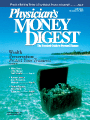Publication
Article
Physician's Money Digest
Find the Sould of America in St.Charles
Author(s):
They dragged west from Chicago across 40 milesin their Conestogas, prairie schooners, and farmwagons in the 1830s—the panic of the BlackHawk War behind them. Eventually, they reached theFox River, which seemed like a good place to put downroots. They were Swedes, Lithuanians, and Belgians—people of the land who knew Chicago was not for them.They called their new home St. Charles, ignoring the factthat Lewis and Clark had left a Missouri city with thesame name.
When the settlers arrived, the Native American tribeswho lived on the land were also moving, forced to leaveas the whites advanced. Over time, St. Charles, Ill, grewinto that microcosm of our nation: small-town America.Today, St. Charles (800-777-4373; www.visitstcharles.com), has all the features of "the American Dream."
American Heritage
A local millionaire, Colonel Baker, couldn't giveenough of his inherited wealth to the town he loved. Amuseum in a converted Texaco station poignantly displaysthe stuff of local St. Charles' legends: photographsof the first settlers, a couple's best dress clothes, anAmerican sailor's uniform, a rocking chair that was partof the underground railroad, and a football used in aminor game that the town recalls proudly.
All of this memorabilia would be kitsch, if it weren'tso touching. St. Charles is the heart of our nation, wherepeople go about their business paying taxes and not askingfor government handouts, and local residents stop tohelp a stranger with a flat tire.
St. Charles Charm
Attractions include the Arcada Theatre (630-845-8900; www.arcadatheatre.com), which still hosts liveentertainment and movies, as it did in 1926. Peopledrove all the way from Chicago to attend shows in thosedays. The Arcada Theatre's history includes the finalvaudeville performance of George Burns and GracieAllen and performances by the John Phillip Sousa Bandand the Trapp Family Singers.
A brief walk over the Main Street Bridge, past thesymbolic statues of foxes surveying the river, broughtlong-ago visitors to the Hotel Baker (630-584-2100;www.hotelbaker.com), which the Colonel built in 1928at a cost of $1 million. Guests could stay there for $2.50a night and dance to Tommy Dorsey or Louis Armstrongin the hotel's celebrated Rainbow Room.
The Rainbow Room's oval dance floor had a glassbrick floor, one of only three in the world, below which3000 light bulbs flashed designs ranging from hearts andthe American flag to shamrocks and Christmas trees.The hotel was restored at a cost of $9 million in 1996,and is now reopening under the ownership of informationtechnology entrepreneurs. Guests can expect both abrush with history and fast Internet connections.
Midwestern Leisure
Golfers visiting St. Charles might prefer the PheasantRun Resort (800-474-3272; www.pheasantrun.com).Built 40 years ago on a 175-acre farm on the east edgeof town, its sprawling 18-hole golf course helps golfersforget they're only 30 miles from the world's busiest airport.Nongolfers can take paddlewheel riverboat cruises,or shop in historic downtown St. Charles, which wonthe Great American Main Street Award in 2000.
This self-styled "Antique Center of the Midwest" ishome to 75 antique dealers. In addition, more than 1000dealers come every summer for the Kane County FleaMarket (www.kanecountyfleamarket.com), which hasbeen staged since 1967. Worth a visit, too, are the 20independent boutiques in the Market Shops on ThirdStreet. The Butterfly Turtle Gallery, run by CatherineBolin, has gorgeous fairy godmother dolls crafted byCanadian artist Jacqueline Kent.
For dinner, nothing beats a visit to Al Capone'sHideaway and Steakhouse (847-741-1244), anauthentic 1920's speakeasy down by the river. Alongwith tongue-in-cheek gangster décor, this steakhouseoffers good food. And if you need absolution afteryour speakeasy meal, hold off on dessert and head toOld St. Patrick's Church; it's now the eclectic Italianrestaurant Eighteen North.
